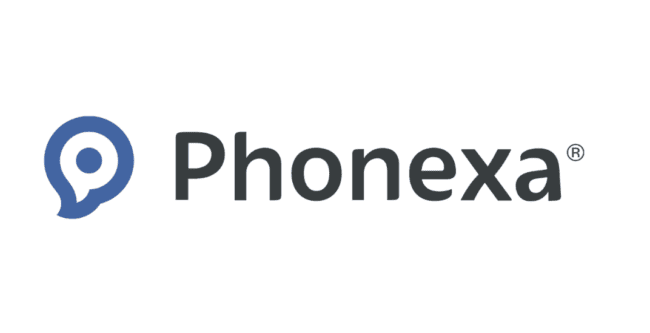What Meta’s New ‘Views’ Metric Means for Affiliate Marketers

Meta’s decision to replace the long-standing “Impressions” metric with “Views” across its platforms has significant implications for advertisers and affiliate marketers.
While impressions have traditionally served as a benchmark for reach, views promise to provide a more accurate reflection of user engagement. This shift raises questions about how affiliates will need to adapt their strategies to ensure effective campaigns and maintain strong performance metrics.
Here’s what the change means for the affiliate marketing industry and how marketers can make the most of this update.
What is the ‘Views’ Metric?
Meta’s new metric, “Views,” counts only those instances where content is actively displayed on a user’s screen for at least one second. This replaces the “Impressions” metric, which included any instance of content being loaded on a page, regardless of whether the user saw it. The move aims to prioritise meaningful engagement and provide marketers with clearer feedback about how often their content is actually being seen.
For affiliates, this new metric could be a game-changer. The transition to views means that campaigns will now be measured by actual exposure rather than potential visibility, pushing for higher-quality content and better alignment with audience preferences.
How This Affects Affiliate Campaigns
1. More Accurate Performance Tracking
Previously, impressions often created a false sense of campaign reach. For affiliates, impressions inflated perceived success because they counted ad loads even if the content never made it into the user’s view. Views eliminate this discrepancy, ensuring that the numbers reflect real opportunities for user engagement.
This is particularly important for performance-based campaigns. Affiliates will now need to align their goals more closely with metrics that indicate genuine visibility, such as views and clicks, rather than relying on inflated reach numbers.
2. Increased Focus on Quality Content
With views becoming the standard, content quality will matter more than ever. Affiliates need to focus on creating engaging, eye-catching content that captures attention quickly. Poorly designed creatives or irrelevant ads are less likely to register views, leading to weaker campaign performance.
To stay competitive:
- Use high-quality visuals that stand out in crowded feeds.
- Test headlines and calls-to-action that encourage immediate interaction.
- Optimise for mobile, as a large portion of Meta’s traffic comes from mobile users.
Meta’s shift to views aligns well with its existing algorithms, which already prioritise content that engages users. Affiliates who invest in creative testing and refinement will be better positioned to succeed.
3. Ad Spend Efficiency
The switch to views could lead to more efficient ad spending. Affiliates often work with limited budgets, so ensuring every dollar spent results in visible content is critical. By focusing on views, affiliates can identify campaigns that genuinely capture user attention, avoiding wasted spend on ads that don’t make it to the user’s screen.
Additionally, Meta’s targeting tools, combined with the new metric, allow affiliates to fine-tune campaigns by identifying audiences most likely to engage. This improves ROI and helps build long-term campaign success.
Challenges for Affiliates
The change to views isn’t without challenges. Here’s what affiliates should watch out for:
- Higher Competition for Visibility: As views become the benchmark, competition for ad placements will likely intensify. Advertisers will push harder for premium real estate within Meta’s platforms, driving up costs for high-performing placements. Affiliates may need to adjust their bidding strategies to secure visibility.
- Potential Learning Curve: Affiliates accustomed to using impressions as a key metric will need time to adapt to views. This includes rethinking campaign KPIs, tracking performance differently, and adjusting reporting formats to reflect the new metric.
- Shift in Partner Expectations: For affiliates working with advertisers or networks, this change could affect payout models. If payouts were partially tied to impressions, they may now shift toward performance based on views. Affiliates should review existing agreements and clarify any changes to metrics or expectations.
Opportunities for Affiliates
While there are challenges, Meta’s move also creates new opportunities for affiliates willing to adapt.
- Better Campaign Insights: Views offer more actionable data than impressions ever did. Affiliates can now analyse campaigns to see what’s genuinely capturing user attention, allowing for sharper decision-making. By focusing on what works, affiliates can build campaigns with higher engagement rates and better conversion potential.
- Stronger Relationships with Advertisers: Advertisers have long been wary of inflated metrics. By delivering campaigns with verified views, affiliates can demonstrate value more effectively, strengthening their partnerships and increasing their credibility in the process.
- Alignment with Other Platforms: The shift to views mirrors similar moves by other platforms prioritising quality over quantity. Affiliates who adapt now will be better prepared for future changes across the digital advertising ecosystem.
Practical Steps for Affiliates
1. Review Campaign KPIs: Affiliates should adjust their key performance indicators to align with views. Metrics like view-through rates and click-through rates will become more critical.
2. Optimise Content for Engagement: Make the first second count. Use bold visuals, strong hooks, and targeted messaging to ensure your content stands out and captures attention quickly.
3. Test and Iterate: With views providing clearer feedback, affiliates should run more A/B tests to refine their campaigns. Test everything from ad formats to audience targeting to maximise results.
4. Communicate with Partners: Affiliates should proactively discuss the shift with advertisers and networks, ensuring everyone is aligned on how the new metric impacts performance and payouts.
Final Thoughts
Meta’s introduction of the views metric is a step toward greater transparency and quality in digital advertising.
For affiliates, this change represents both a challenge and an opportunity. By focusing on meaningful engagement and adapting to the new standard, affiliates can not only maintain their performance but also build stronger, more sustainable campaigns.
Those who embrace this shift will be better equipped to thrive in the changing digital marketing landscape.






